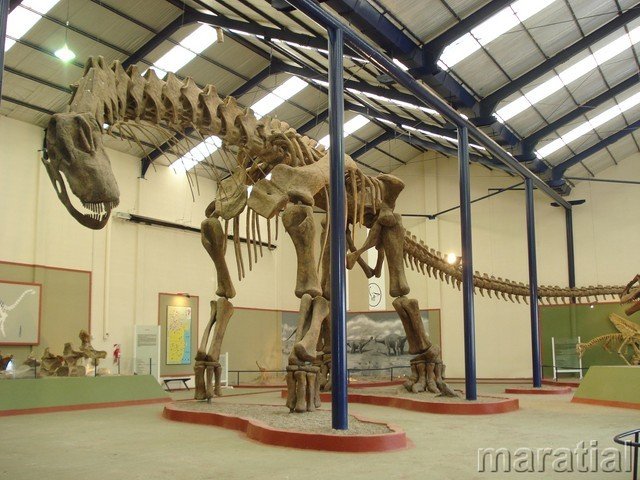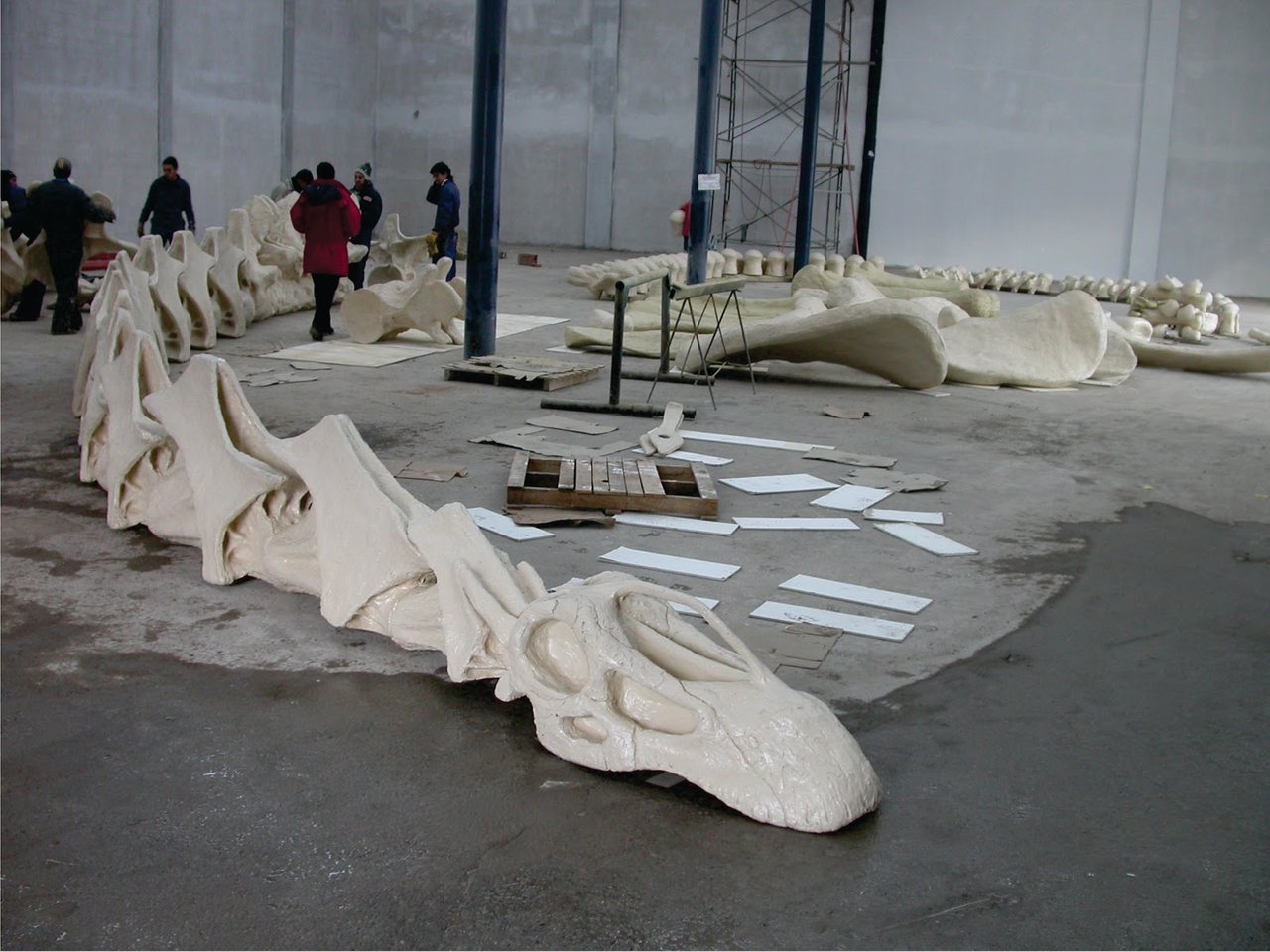The paleontological media passion accomplishes a cycle that never comes to an end (otherwise it would not be a cycle): it starts at childhood, with our mesmerizing fascination for dinosaurs and ends with that teenager fascination for the size of them.
To know who has the largest dinosaur is the “leitmotiv” of several news in the latest times. Worthy and phallic as always, The southern continents do not quit exposing their humongous samples, in a matter of size, there’s nothing to envy from the rest of the world. There’s a reason to be proud of this and it’s to prove, size does matter.
At the last months there was a couple of articles and repostings about a titanosaur found at the Chubut province of Argentina, dinosaur that was awarded the “largest on earth” badge. As a recognition, a replica is exhibited at New York in the American Museum of Natural History. But, when we were not finished being proud of this little critter, at the Mendoza province another fossil was found, a Notocolossus, a new dinosaur, that according to the media, is larger than the previously mentioned (poor guy, lasted too little at the throne). Far behind is the mythic Argentinosaur, the Futalognkosaurus and the Dreadnoughtus all of which claimed that title at a moment.
Of course, nobody wants to stay out of this challenge. Europe claims justice for the Turiasaurus, Northamericans are proud of the Amphicoelias fragillimus and several other diplodocids (long neck dinosaurs).
The scenario for such competition is the placement at several international magazines that in many cases are willing to sacrifice a little bit of professionalism for the sake of publishing something about a neat and cool new dinosaur, you know, headlines sell.The mistake consists in considering paleontology as some sort of chauvinist tool and not as a science. Yes, they F*ck up.
Yes, size does matter. But, in defense of the not so favored, we can say that size is a secondary trait and the use of this magnitude is what primes it (we still don’t know if paleontology stole this idea from Cosmopolitan or if it was the other way around). The length of the dinosaur –or weight, as alternative– works as a leverage for the paleontologist at his role of rebuilding ecosystems of the past. A heavier animal would require more foliage to feed. A longer one, a larger influence area. The idea is to study the biologic past in all their complex possible ways, to understand the history of life itself. And somehow clarify, life today. Magnitudes are necessary, but reaching them is the conflictive part.

Argentinosaurus rebuilt at the Carmen Funes Museum (Neuquén, Argentina).
To ask which one is the largest sports team creates conflictive replies. Team fans will claim “theirs”, the amount of tournaments and trophies won; and whether they were National, or international (while disregarding the other team's achievements).
At paleontology something similar happens: depending of the characteristic we look at, we will have a “better” or “worse” dinosaur. The criteria is chosen by the scientist. If we compare vertebrae, let’s see which dinosaur wins. If we chose limbs, another one will be picked. There’s not so many options anyways. There’s very few complete fossils ever found, luckily a few stranded and scattered bones are found. Unless there’s some exceptional circumstances, not a lot is preserved, and there’s even less recovered, specially if we consider the size of these animals of tons of weight bones and which require a lot of economic, and human resources to be recovered.
Then we compare what we have, even a single bone if necessary. And here the sharp mind of the scientist takes advantage: choosing the pieces to study, of the related species to make inferences, in the cunning of observation and knowledge of other samples to complete the puzzle. In the end, the multiplicity of variables to rebuild an animal that has never seen anyone here alive. Imagination to the power! (and to the paper). Results are different according to criteria and it’s not easy at any science to settle a standard one.
If we pay attention to these details, some countries remain in a very nice standing, even when at the end of the day, the “medal” is taken by a foreign specimen. To place a dinosaur as one of the largest ones, is not only luck; it also takes a lot of scientific effort. Then press comes in, funds for new investigations arrive and the consequent recognition, like the latest one, is well deserved.
 This image is not a fossil, it’s an expanded polyurethane Argentinosaurus replica, ready to be assembled.
This image is not a fossil, it’s an expanded polyurethane Argentinosaurus replica, ready to be assembled.
Understanding this, we can laugh a bit about the eternal dino-debate. Anyways, it is not just a matter of size, but also knowing how it’s done. RAWR.
